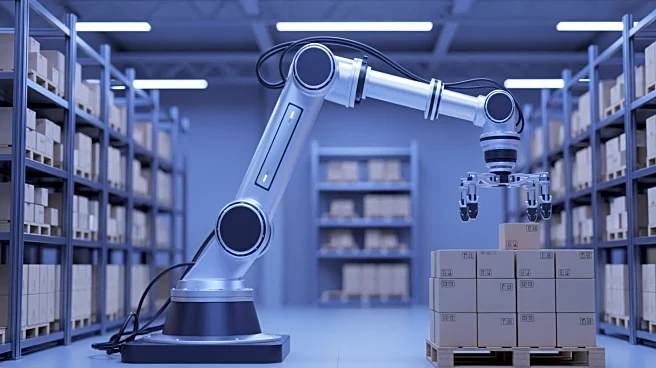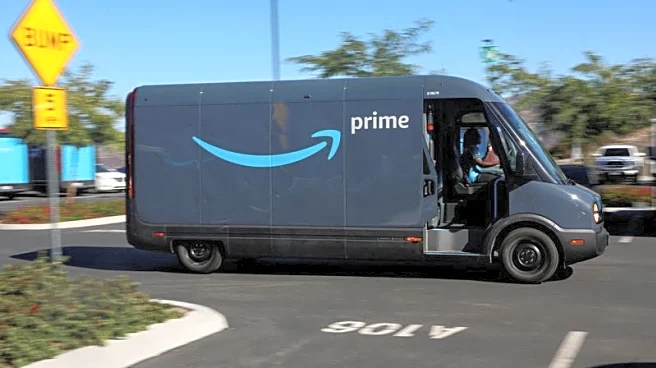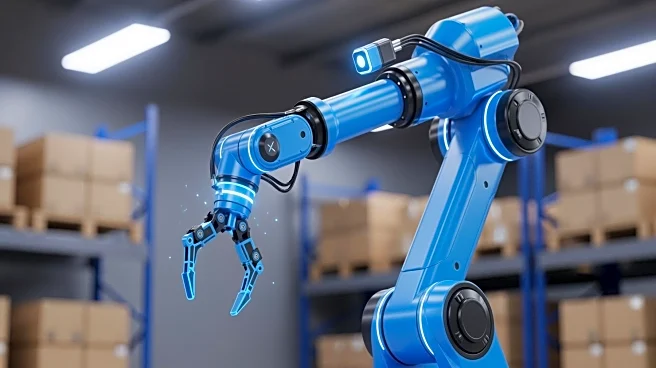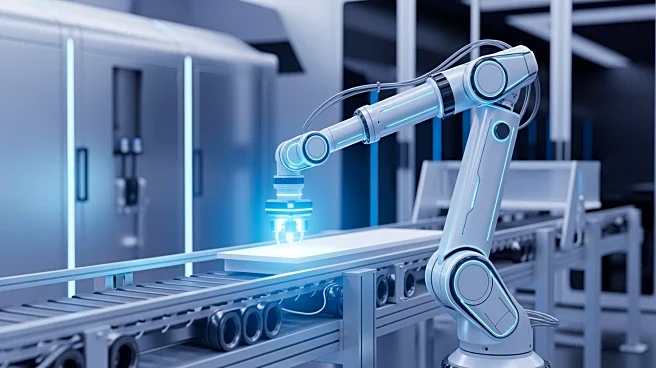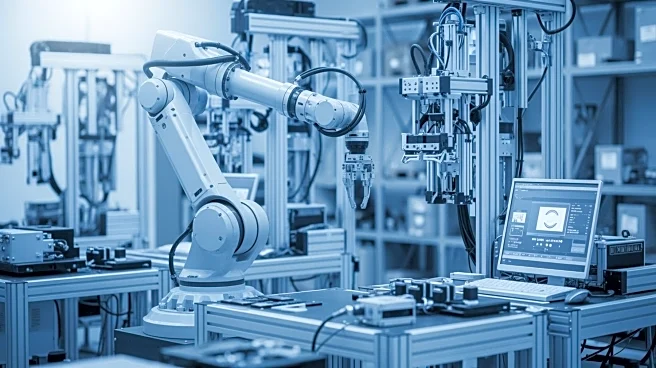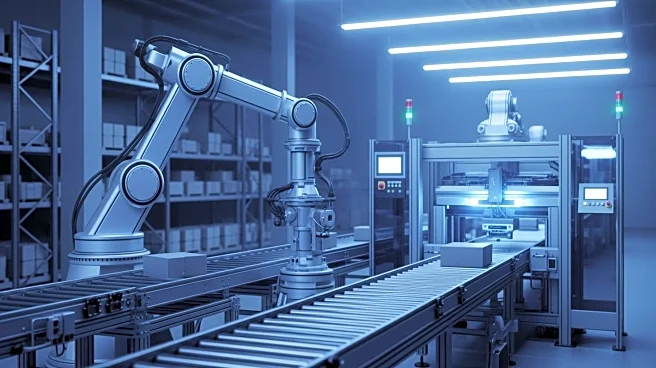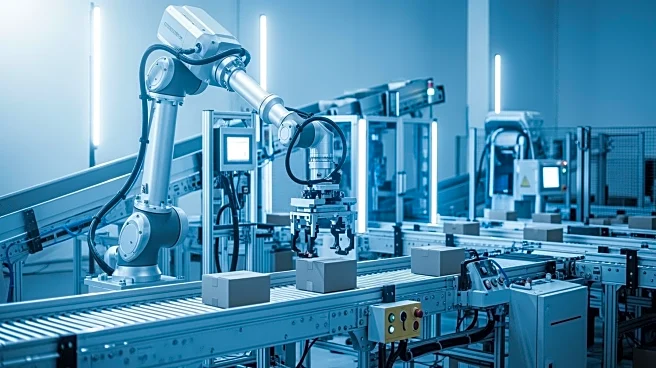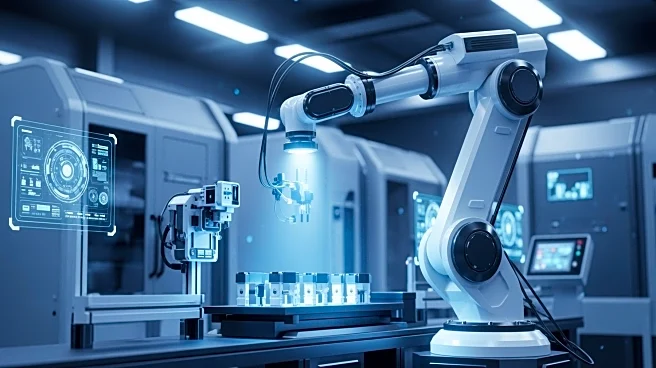What's Happening?
Amazon has unveiled two major technological advancements aimed at enhancing its fulfillment and operations network. The first is a robotics system named Blue Jay, which is a ceiling-mounted automation
system designed to synchronize multiple robotic arms within a single station. This innovation allows for the execution of picking, stowing, and consolidation processes that previously required separate robotic stations. The system was developed and brought to production in just over a year, a significant reduction compared to the multi-year rollout of previous systems. Blue Jay is currently being piloted at a facility in South Carolina, where it is handling approximately 75 percent of the full range of item types stored at that site. Additionally, Amazon introduced Project Eluna, an agentic artificial intelligence model that acts as an 'extra teammate' for operations managers, providing data-driven recommendations to optimize sortation and avoid bottlenecks.
Why It's Important?
The introduction of Blue Jay and Project Eluna represents a significant step in Amazon's ongoing efforts to automate key parts of its logistics and fulfillment operations. These technologies are designed to reduce repetitive tasks, improve safety, and support employee decision-making, ultimately accelerating delivery performance across Amazon's network. For employees, the focus is on reducing physically demanding tasks and improving ergonomics, which could lead to safer work environments and new career pathways. For customers, the aim is faster delivery and more efficient operations. This move underscores Amazon's commitment to leveraging AI and robotics to enhance both employee and customer experiences, potentially setting new standards in the industry.
What's Next?
Amazon plans to deploy Project Eluna initially at a Tennessee fulfillment center during the holiday season, focusing on sortation optimization. As these technologies are further integrated into Amazon's operations, they may lead to broader changes in logistics and fulfillment strategies. Stakeholders such as operations managers and frontline employees are likely to experience shifts in their roles and responsibilities, with technology playing a more central role in decision-making processes. The success of these pilot programs could pave the way for wider implementation across Amazon's facilities, potentially influencing industry practices and standards.
Beyond the Headlines
The development of Blue Jay and Project Eluna highlights the ethical and cultural dimensions of automation in the workplace. As technology increasingly takes on tasks traditionally performed by humans, there are implications for job security and the nature of work. Amazon's emphasis on creating safer and smarter work environments suggests a focus on human-centric automation, where technology complements rather than replaces human labor. This approach could influence broader discussions on the future of work and the role of AI and robotics in society.
